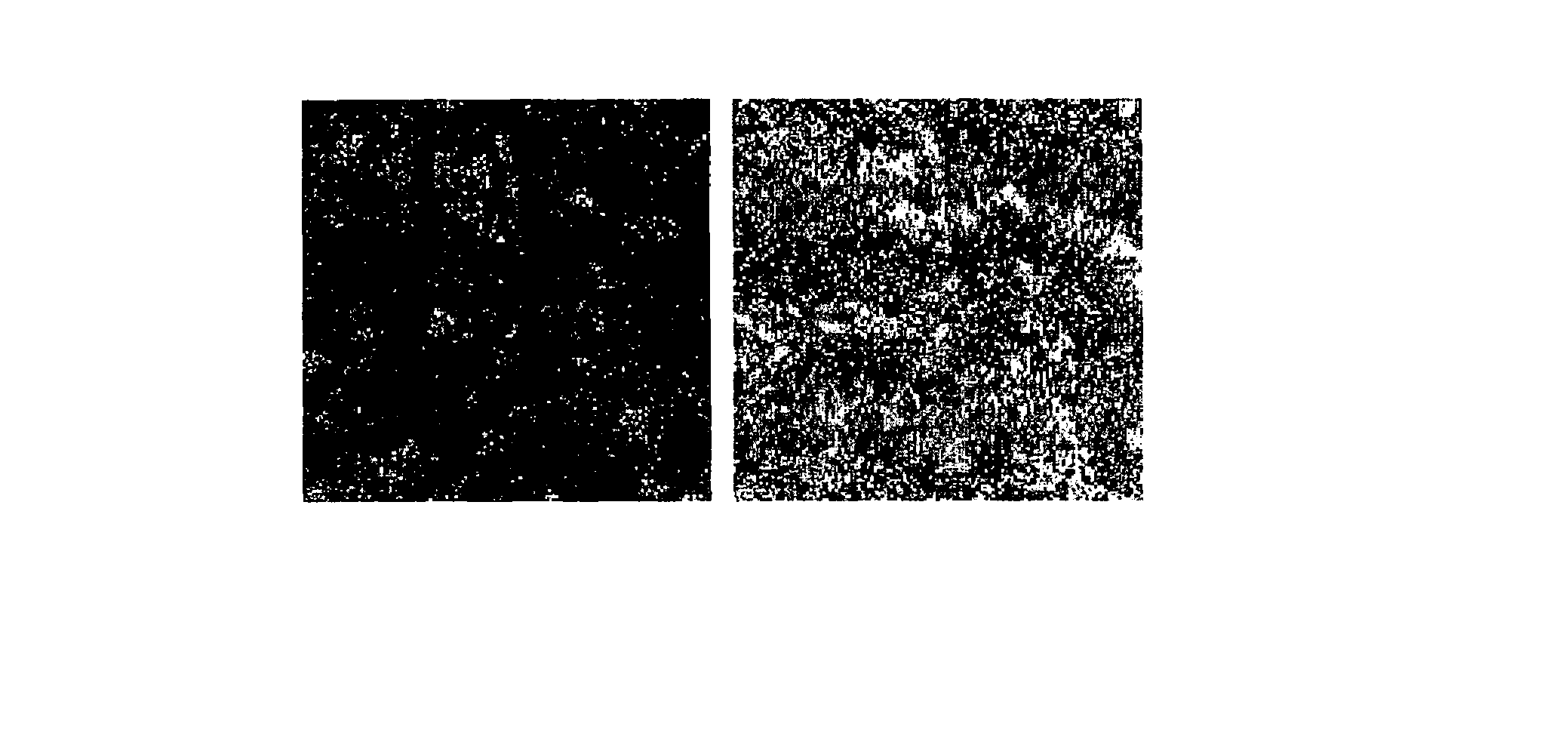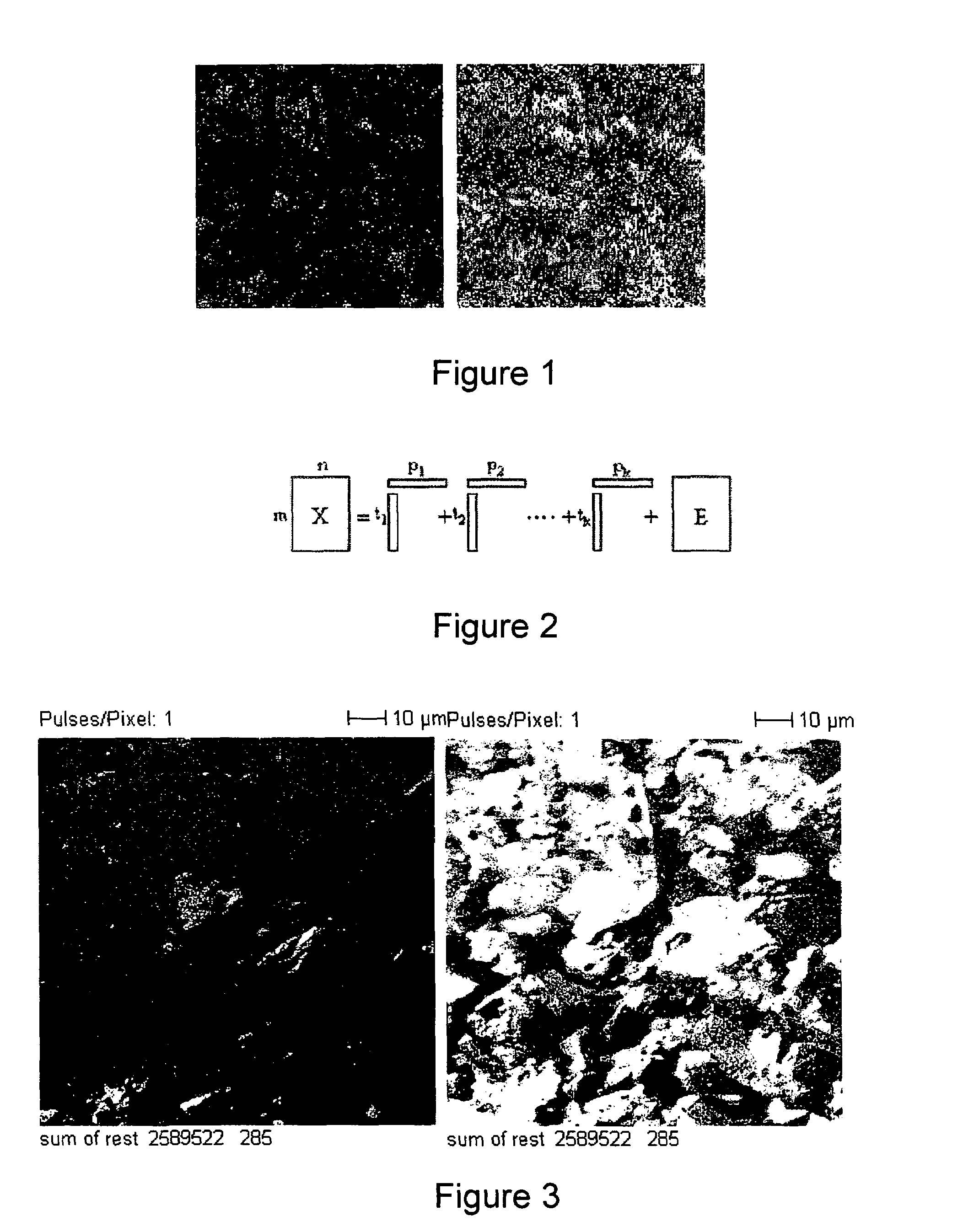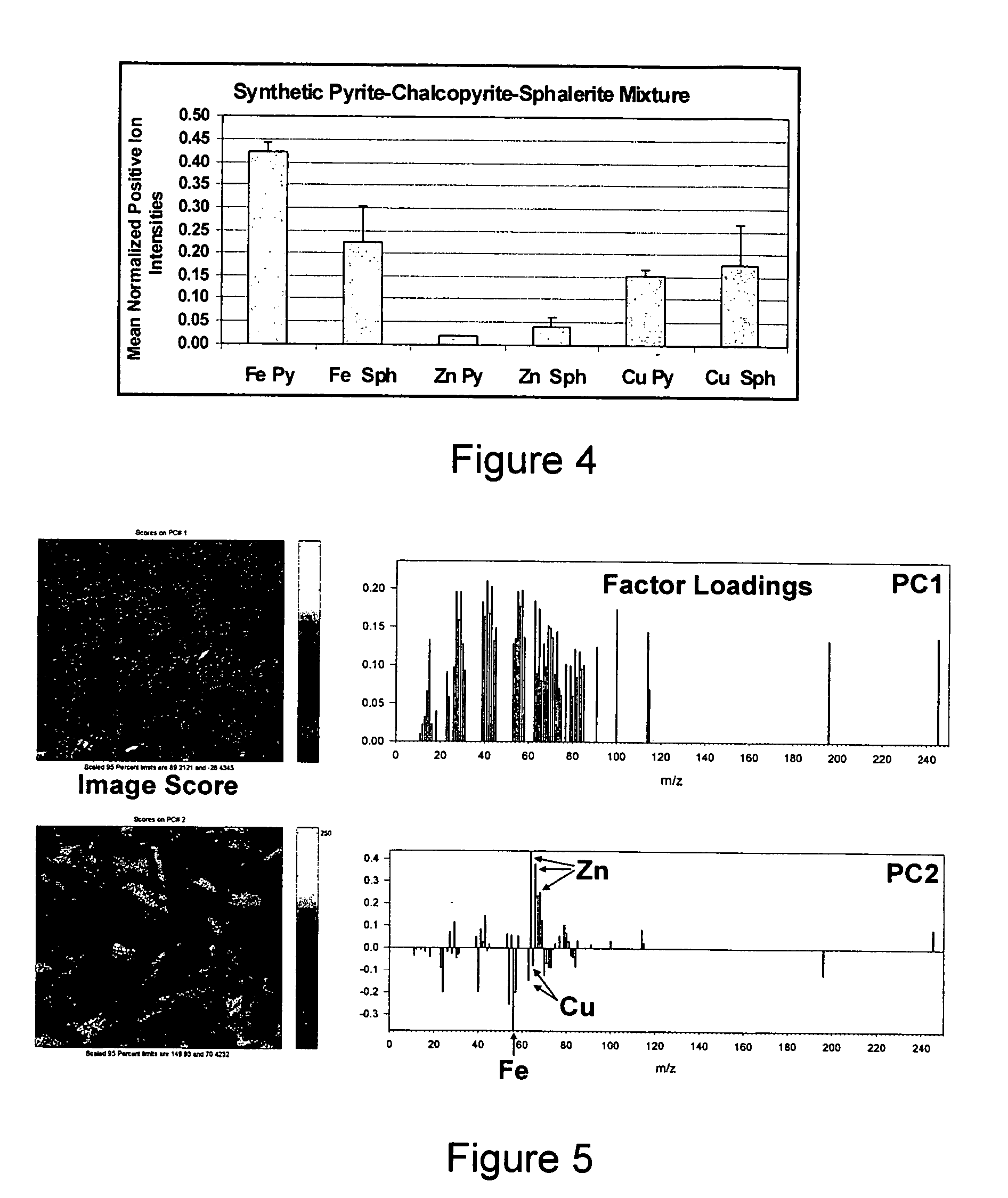Statistical methods applied to surface chemistry in minerals flotation
a technology of surface chemistry and mineral flotation, applied in the field of mineral surface chemistry analysis for mineral phase recognition, can solve problems such as not being easy to achiev
- Summary
- Abstract
- Description
- Claims
- Application Information
AI Technical Summary
Benefits of technology
Problems solved by technology
Method used
Image
Examples
example 1
Sample Preparation and Mounting
[0050]The chalcopyrite / pyrite / sphalerite mixed mineral sample was conditioned with a pH 9 solution of sodium hydroxide for 20 minutes. Slurry samples were pressed into indium foil and transferred to the introduction chamber of the ToF-SIMS with the mineral surfaces still wet, i.e. without contact with air. The remaining liquid is then pumped away in the vacuum.
Results and Discussion
Mixed Mineral System
[0051]ToF-SIMS statistical analysis is reported for a chalcopyrite / pyrite / sphalerite mineral mixture conditioned at pH 9 for 20 minutes in order to study transfer of Cu from chalcopyrite via solution to the other two mineral surfaces. This mechanism can be responsible for their inadvertent flotation in copper recovery. In particular, preferential adsorption of copper ions between pyrite and sphalerite was examined. The system provided an opportunity to compare the results from the single specie ion image mineral phase identification to the PCA differentia...
example 2
[0060]The Inco Nickel-Copper Matte flotation process (Sproule et al., 1945, Tipman et al., 1976) separates chalcocite (CU2S, Cc) from heazlewoodite (NiS, Hz) using a diphenylguanidine (DPG) collector and frother. The separation becomes less selective as the minerals move through the circuit. Possible reasons suggested for this loss include: inadvertent activation of Hz by dissolved copper ions; depression of Cc by dissolved nickel ions; lack of selectivity of the diphenylguanidine (DPG) collector including slow formation of Ni-DPG complexes at Hz surfaces and possible requirement of oxidation of Cc surfaces before effective DPG adsorption; depressant action of the calcium ions introduced as lime in the control of pH to 11-12 in this circuit. We have used the same PCA methods to study concentrate and tail samples from the operating plant.
Sample Preparation and Mounting
[0061]The chalcocite / heazlewoodite plant samples were collected from the Inco Matte Concentrator plant (C. Valenius) ...
PUM
 Login to View More
Login to View More Abstract
Description
Claims
Application Information
 Login to View More
Login to View More - R&D
- Intellectual Property
- Life Sciences
- Materials
- Tech Scout
- Unparalleled Data Quality
- Higher Quality Content
- 60% Fewer Hallucinations
Browse by: Latest US Patents, China's latest patents, Technical Efficacy Thesaurus, Application Domain, Technology Topic, Popular Technical Reports.
© 2025 PatSnap. All rights reserved.Legal|Privacy policy|Modern Slavery Act Transparency Statement|Sitemap|About US| Contact US: help@patsnap.com



